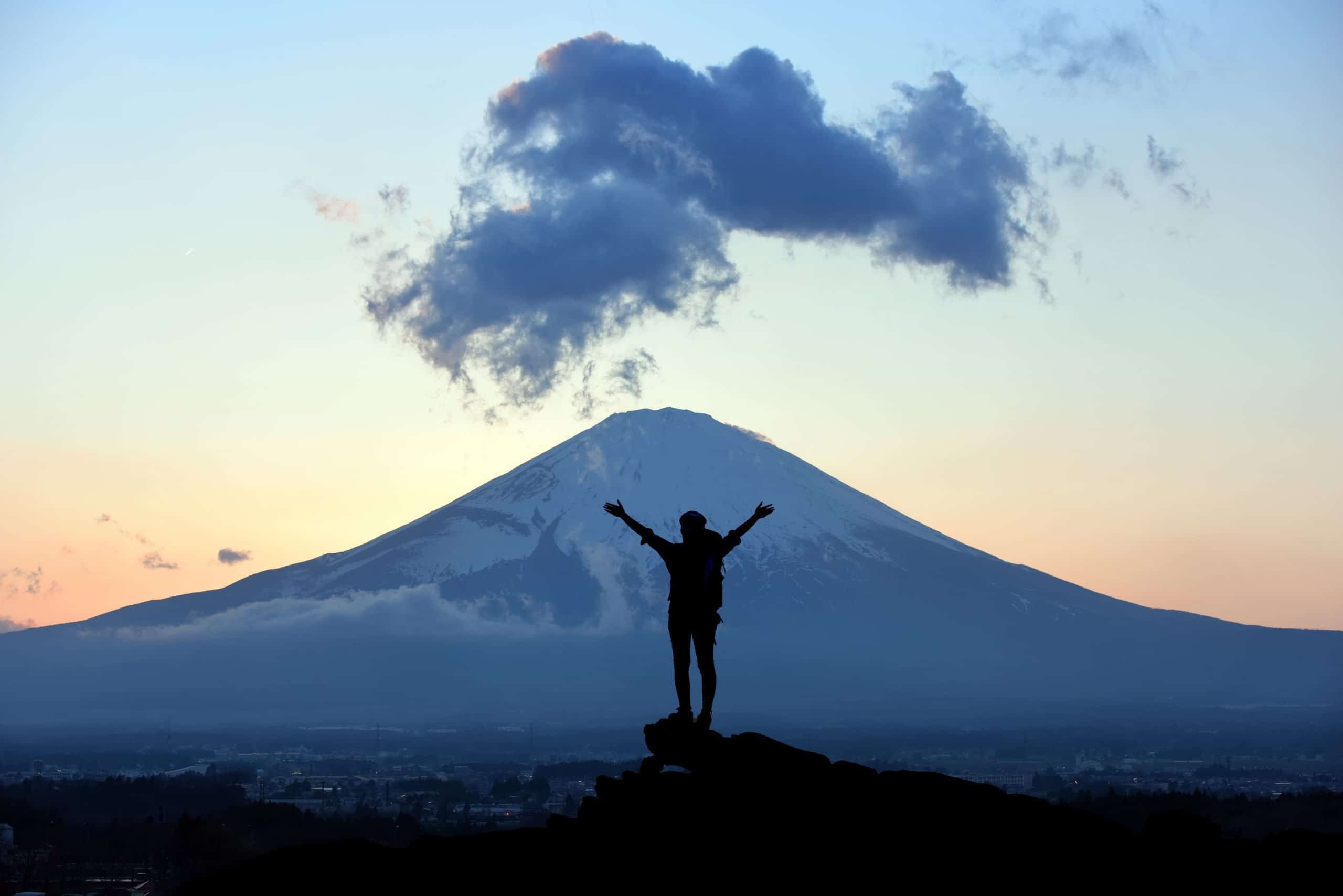Ascending Japan’s tallest peak is a must-do excursion that will enrich your spirit. And your muscles will forgive you (eventually).
There’s a saying in Japanese that roughly translates to: “A wise person will climb Mt. Fuji once in his or her lifetime, but only a fool would climb it twice.” Like most sayings, that’s oversimplifying things greatly. This isn’t Kilimanjaro, so you needn’t be in perfect shape—any able-bodied person can reach the summit with patience, perseverance and proper footwear. Plus, a lot depends on what month of the year you attempt to summit the imposing peak, from which direction and at what time of day. Plan your ascent with these things in mind, and the experience of conquering Mt. Fuji will not only be unforgettable, it’ll be transcendent—a ritual you’ll want to repeat on each trip.
Mt. Fuji, the tallest peak in Japan at 12,388 feet, can be seen from Tokyo—100 kilometers away—on a clear day. The active volcano (though it hasn’t erupted in more than 300 years) looms large in Japanese culture, art and mythology. This makes summiting it and taking in the spectacular views nothing short of a spiritual experience. That’s especially true if you’re willing to begin your hike at nighttime, so as to arrive at the top to watch the sunrise. (Easy, of course, if you’re jetlagged and already awake at such an uncommon hour anyway.)
Regardless of when you choose to make the journey, however, there are several things to know and prepare for ahead of time.
Getting there and back
Because the summit is snow-capped five months of the year, with unpredictable weather either side of winter, the best months for hiking Mt. Fuji are July through mid-September. Because of the short window for safe climbing, you can expect somewhat crowded trails. That’s why a nighttime ascent is a good option, as is planning to make the trek on a weekday, when locals are at work or in school.
To get there from Tokyo, you can take a two-hour, 2,000-yen ($18) bus trip from any of three bus stations: Shinjuku, Tokyo Station or Shibuya. You can also opt for a train from Shinjuku, which is comparable in both cost and travel time.
Starting point
You have your choice among four different trails to the top, each with nine stations or rest stops along the way, the tenth station being the summit. But most hikers don’t start at the bottom, since paved roads take hikers to the fifth station on each of the four trails.
The most popular trail is the Yoshida route, which has separate uphill and downhill paths to alleviate congestion. Yoshida’s fifth station, called Kawaguchiko, is the easiest to access by bus or train from Tokyo. Kawaguchiko also offers restaurants and shops for supplies, such as snacks, water and walking sticks. The other stations on the way up also sell water, food and even oxygen canisters. But the higher you climb, the higher the prices. So stock up at Kawaguchiko with the food and water you expect to consume. Also, don’t forget a flashlight.
Reaching the peak
The ascent, depending on your level of fitness and how often you stop for rest or photos, will take five to seven hours; descent will take three or four more. If you want to circumnavigate Fuji’s crater, plan for an extra hour.
In order to see the sunrise, the smart strategy is to start hiking at around 8 p.m. or 9 p.m. from Kawaguchiko. Between stations seven and eight on this route there are several huts where you can arrange to sleep for about 5,000 yen per person (meals and water are extra), or just rest for a cost of about 1,000 yen per hour. After a couple hours you can hit the trail again to make sure you’re at the summit in time for dawn.
Just don’t expect to see much of interest when you first set out in the early hours. The final couple thousand feet of elevation is akin to the Mars landscape—rocky and ashen. Mt. Fuji is, after all, a volcano. But if you manage to summit in time for sunrise, the views promise to be nothing short of spectacular.
You can, of course, ascend and descend in a single day. But an afternoon summit is likely to be accompanied by clouds obstructing the views. While you’ll still get the sense of accomplishment for conquering a 12,000-foot peak, that’s easy to do close to home. Instead, try and see why Japan truly lives up to its name as land of the rising sun.

